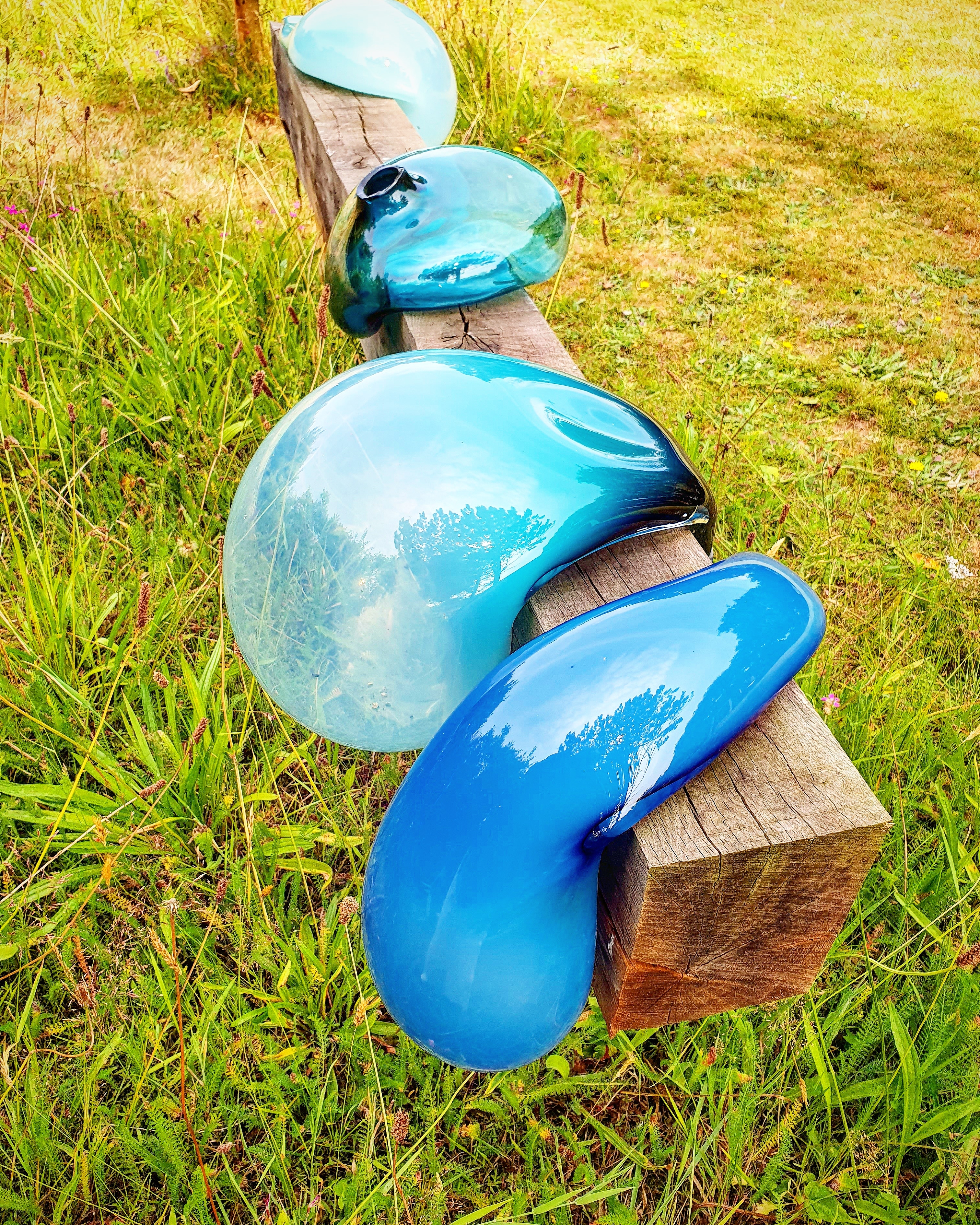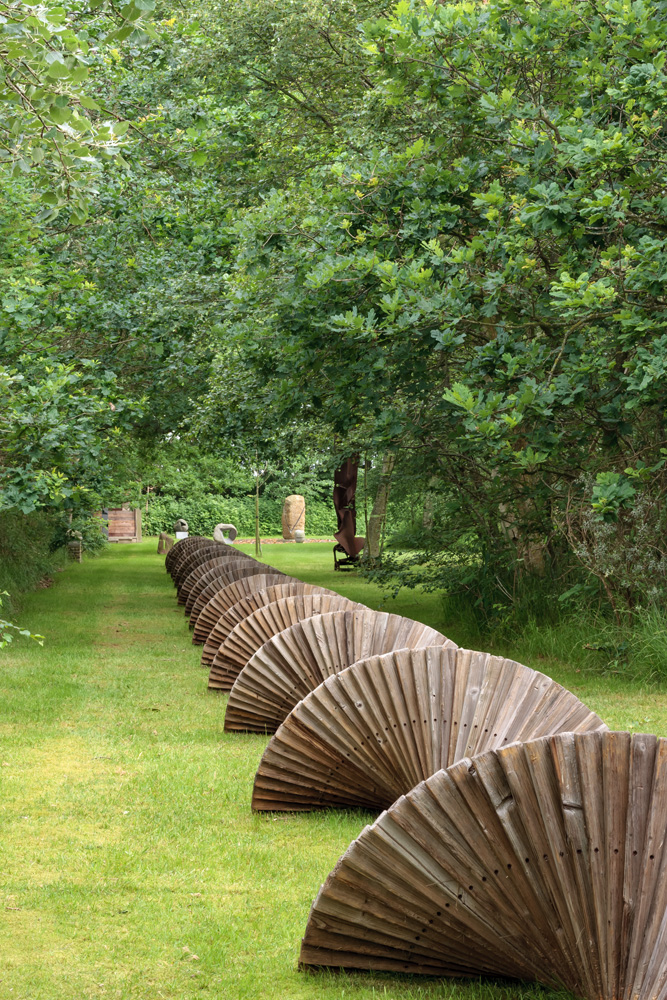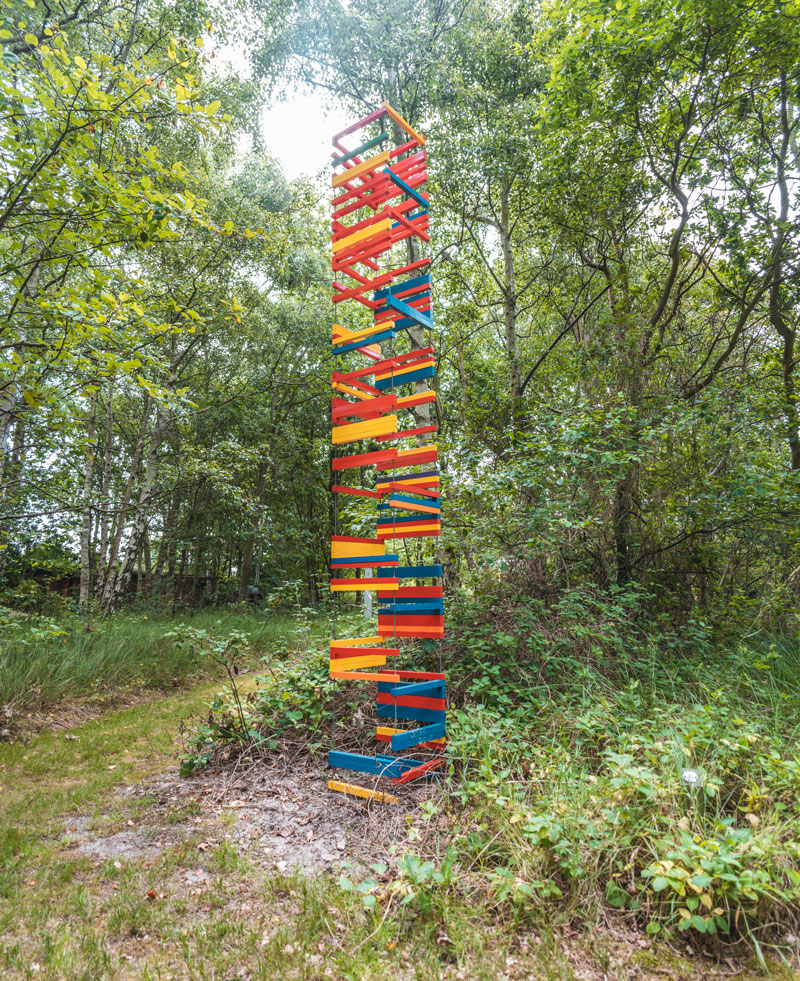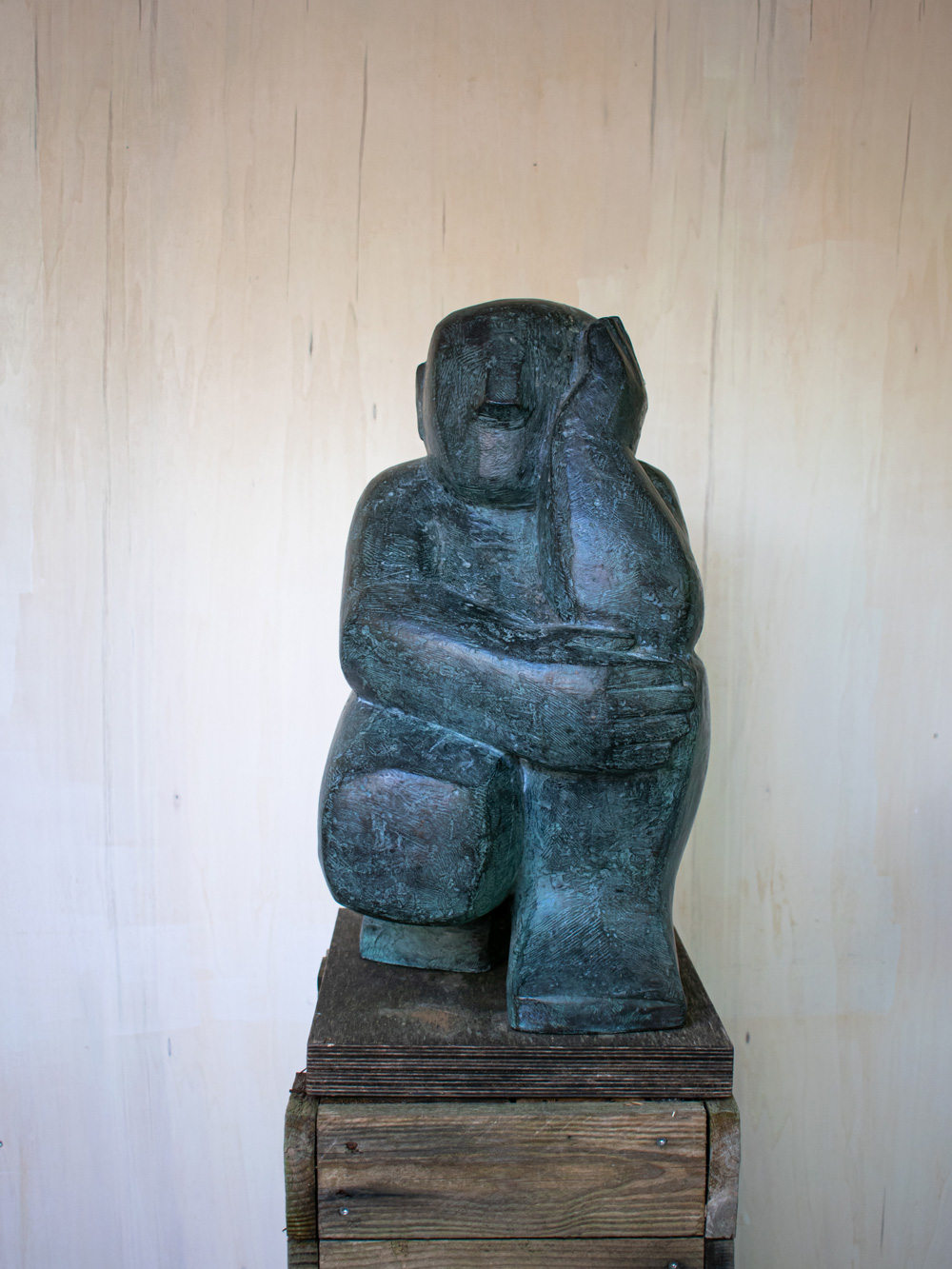

The garden
Our sheltered garden forms the backdrop for the works of art. It is a diverse landscape, there are open spaces, a forest, a vegetable garden, hedges and shrubs, places where nature takes its course, fragrant flower beds and a pond. A route has been laid out through the garden, but of course your are also free to find your own way.

The garden is surrounded by so-called schurvelingen or hoagtes: sand walls planted with grass and shrubs that divide the landscape and thus indicate the boundaries of the property. They provide shelter and create the intimacy of the garden. The sandwall area is unique for Ouddorp. It does not occur anywhere in the Netherlands and there are only 3 areas in Europe where a landscape of sand walls has been constructed in the same way as in Ouddorp: in Normandy, in northern Germany and northern Portugal. The sand walls are protected and belong to the cultural heritage of our island.
The characteristic sandbanks, the natural vegetation, the robust fences and walls provide the many intimate places where the works of art individually or grouped come into their own. There are places where you can sit and enjoy a work of art, the silence and nature. The stratification of the garden gives each sculpture the place and attention it deserves.
In addition, the garden has a number of small pavilions where the more vulnerable work is exhibited.
Nature reserve Westduinen
On the last ‘schurveling’ in the garden is a viewpoint with a surprising view over the Westduinen, an impressive nature reserve with bumpy dunes with dry tops and wet valleys. The nature reserve is not accessible to the public.
The dune area is partly located on an underground transmission station and is part of the worldwide Echelon network to intercept communication. The site is guarded 24 hours a day and has a surreal appearance due to the large number of antennas and radio masts. The above-ground nature reserve is managed by the Zuid-Hollands Landschap. Cows and sheep graze here and it is the habitat for rare species such as the screw orchid and the Northern vole.
In collaboration with the Zuid-Hollands Landschap, we have placed a work of art in the Westduinen that is visible from the vantage point and from the road. We are allowed to enter the dune area once a year to change the work of art. An employee of the Zuid-Hollands Landschap shows exactly how we can navigate through the area without damaging vulnerable vegetation, nests or caves.

Rearrangement
Every year we also rearrange the garden: existing works by artists are rearranged or moved and some works are replaced. The aim is to show the works in a different light, so that visitors can view and appreciate them in a different way.


The garden
Our sheltered garden forms the backdrop for the works of art. It is a diverse landscape, there are open spaces, a forest, a vegetable garden, hedges and shrubs, places where nature takes its course, fragrant flower beds and a pond. A route has been laid out through the garden, but of course your are also free to find your own way.

Nature reserve Westduinen
On the last ‘schurveling’ in the garden is a viewpoint with a surprising view over the Westduinen, an impressive nature reserve with bumpy dunes with dry tops and wet valleys. The nature reserve is not accessible to the public.
The dune area is partly located on an underground transmission station and is part of the worldwide Echelon network to intercept communication. The site is guarded 24 hours a day and has a surreal appearance due to the large number of antennas and radio masts. The above-ground nature reserve is managed by the Zuid-Hollands Landschap. Cows and sheep graze here and it is the habitat for rare species such as the screw orchid and the Northern vole.
In collaboration with the Zuid-Hollands Landschap, we have placed a work of art in the Westduinen that is visible from the vantage point and from the road. We are allowed to enter the dune area once a year to change the work of art. An employee of the Zuid-Hollands Landschap shows exactly how we can navigate through the area without damaging vulnerable vegetation, nests or caves.
Rearrangement
Every year we also rearrange the garden: existing works by artists are rearranged or moved and some works are replaced. The aim is to show the works in a different light, so that visitors can view and appreciate them in a different way.

The garden is surrounded by so-called schurvelingen or hoagtes: sand walls planted with grass and shrubs that divide the landscape and thus indicate the boundaries of the property. They provide shelter and create the intimacy of the garden. The sandwall area is unique for Ouddorp. It does not occur anywhere in the Netherlands and there are only 3 areas in Europe where a landscape of sand walls has been constructed in the same way as in Ouddorp: in Normandy, in northern Germany and northern Portugal. The sand walls are protected and belong to the cultural heritage of our island.
The characteristic sandbanks, the natural vegetation, the robust fences and walls provide the many intimate places where the works of art individually or grouped come into their own. There are places where you can sit and enjoy a work of art, the silence and nature. The stratification of the garden gives each sculpture the place and attention it deserves.
In addition, the garden has a number of small pavilions where the more vulnerable work is exhibited.



